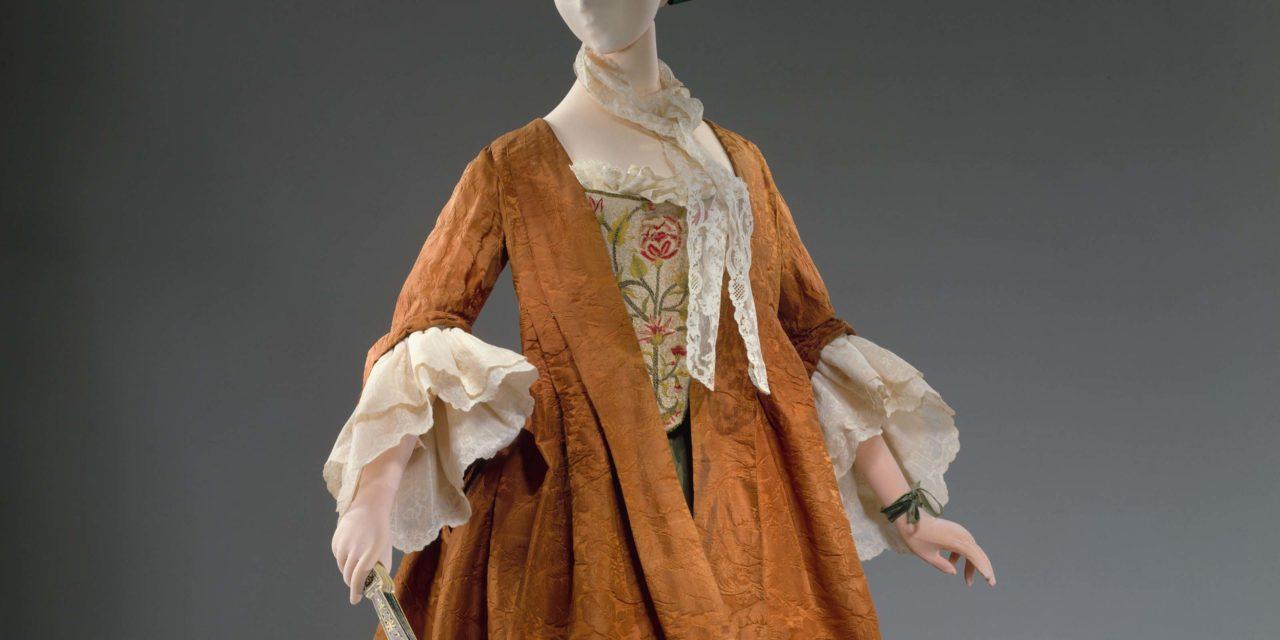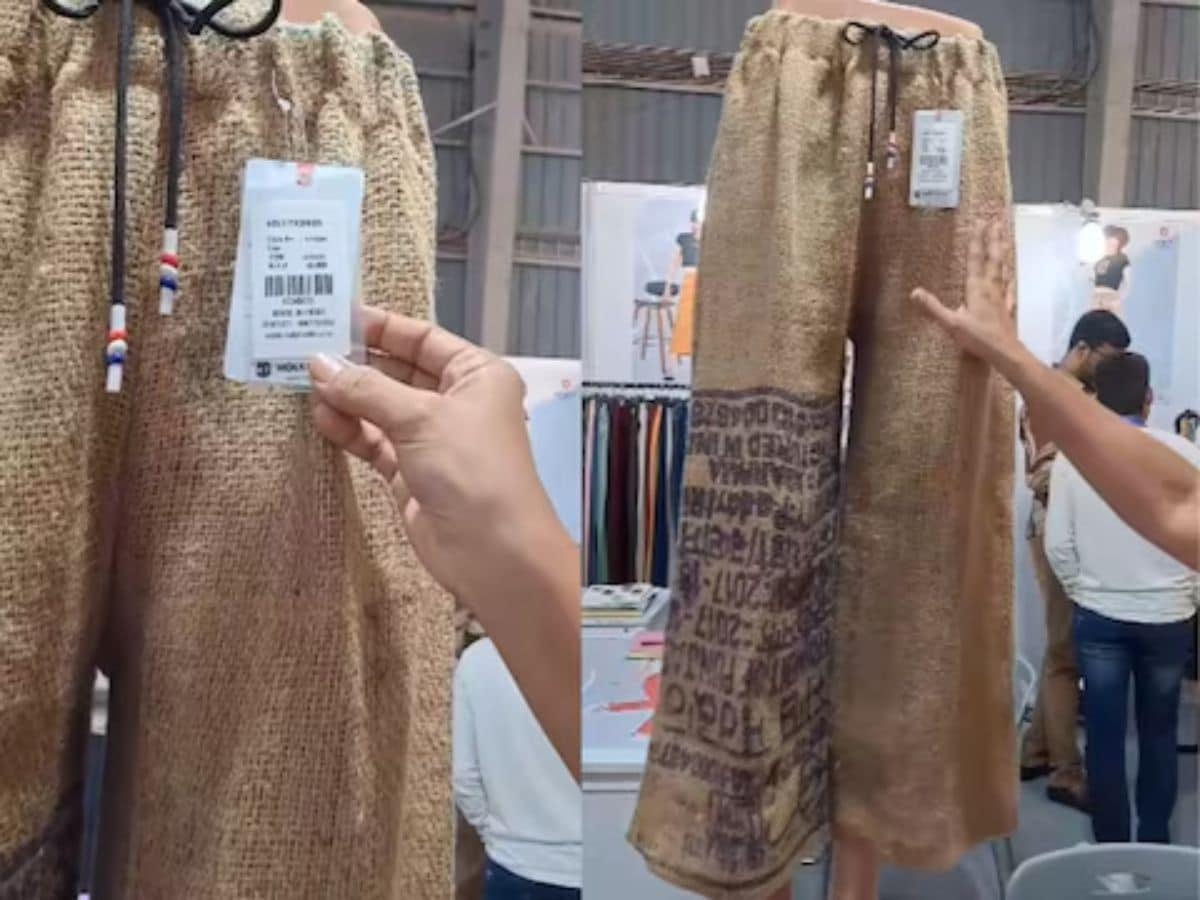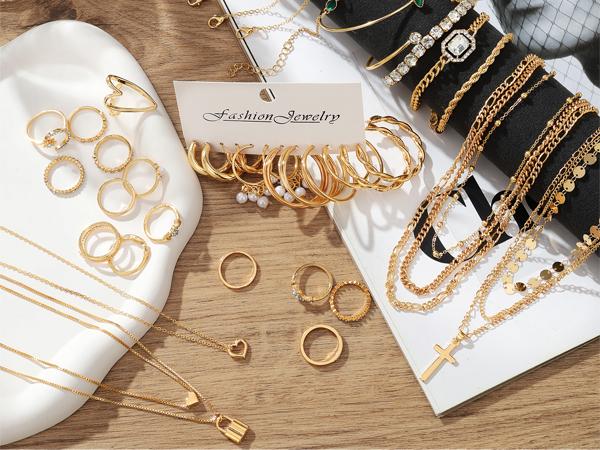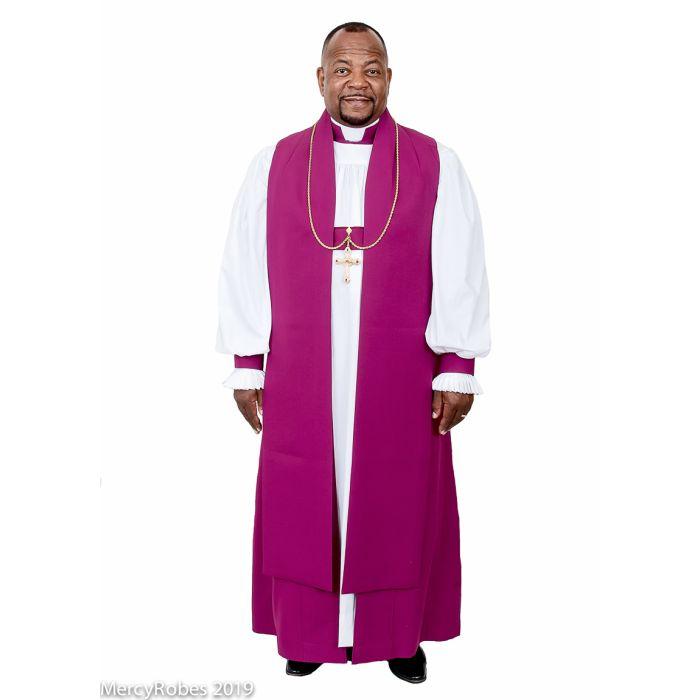In the grand arena of sacred fashion, two titans stand ready to strut their stuff: the Episcopalians and the Catholics. Forget sports jerseys or high-fashion runways; we’re talking about the battle of the robes! As priests shuffle down aisles with the grace of runway models—and nary a hair out of place—questions abound: Who truly owns the title of “most fashionable clergyman”? Is it the progressive elegance of the episcopal chasuble or the classic gravitas of the Catholic cassock? Prepare to don your best shades, because we’re diving into this divine style showdown that promises not just a clash of beliefs, but a veritable feast for the eyes (and a few chuckles along the way).Get ready for a heavenly dose of humor, haute couture, and possibly the cheekiest ecclesiastical puns you’ve ever encountered!
Table of Contents
- Who Rocked the Robes First: A Historical Throwdown
- Fabric Faces: The Textile Wars of Episcopal and Catholic Attire
- Color Me Impressed: The Aesthetics of Holy Fashion
- Accessorizing the divine: Jewelry and Gimmicks of Sacred Style
- Warding Off the Chill: Practical Considerations for Holy Dress in Different Climates
- Q&A
- Future Outlook

Who Rocked the Robes First: A Historical Throwdown
Let’s dive into the age-old debate of who truly rocked the robes first. Both the Episcopal and Catholic traditions have their own unique flair, but when it comes to robe fashion, the competition is *exceedingly* stylish!
The Episcopal Ensemble: Bishops in Blazers
Episcopalians are known for their sophisticated yet approachable style. Picture this:
- Colorful Stoles: These vibrant accessories are the true stars, adding pops of color to the classic black robes.
- Liturgical Flexibility: Whether it’s a casual Sunday service or a grand party, Episcopal hues range from understated elegance to flamboyant fashion.
- Accessorizing Aplenty: Think of the intricate patterns and textures—each stole tells its own story, proving that accessorizing isn’t just for the runway!
The Catholic Couture: Tradition Meets Glamour
Now, let’s not dismiss the Catholics. Their robes are steeped in history and grandeur:
- The Papal Attire: The Pope’s robes are like the couture of liturgical fashion—exquisite fabrics and timeless elegance.
- Chasubles Galore: These beautifully embroidered garments elevate mass to an art form, each stitch meticulously placed.
- Tradition Rich: With centuries of lineage, the opulent fabric choices create a regal atmosphere that can’t be beaten!
Fashion Face-Off
| feature | Episcopal | Catholic |
|---|---|---|
| Color Variety | ∞ | Classic Palette |
| Historical Depth | Moderate | Deeply rooted |
| Accessory Game | Strong | Regal |
So, who’s winning the robe race? Both sides flaunt remarkable styles tailored to their traditions. Whether you lean toward the Episcopalian chic or the Catholic grandeur, there’s no denying the power of a well-worn robe. And let’s be honest—the real winners here are the tailors who keep these divine ensembles looking fresh!
Fabric Faces: The textile Wars of Episcopal and Catholic Attire
When it comes to the epic showdown of ecclesiastical ensemble, we find ourselves torn between the majestic robes of the Catholic Church and the dapper attire of the Episcopal clergy. Each faction dons its fabric with fervor,establishing a legacy of sartorial splendor that is as rich as the history behind it. Who knew that the battle of the cloth could spark such passionate debates?
| feature | Catholic Attire | Episcopal Attire |
|---|---|---|
| Styles | Chasubles, stoles, and copes – perfect for making a divine statement. | alb and cassock – tailoring elegance with a dash of holy vibe. |
| Color choices | Pantone of the heavens! Think purples, reds, and whites for every holy occasion. | Earthy tones mixed with vibrant shades; after all,who says you can’t be stylish while preaching? |
| Accessories | Rosaries,crucifixes – jewels from the heavens! | Stylish sandals and fashionable hats – rain or shine,they’ve got it covered! |
But let’s not forget the undeniable charm of the fabric choice itself. The Catholic robes speak to a tradition that encompasses centuries of artistry, while the Episcopalian selections often reflect a more modern flair, appealing to those looking to blend tradition with contemporary trends. Can we say one is definitively cooler than the other? Well, that’s like debating if chocolate or vanilla ice cream is better; it’s a personal journey!
- Episcopalians: Stylishly combating the mundane, boasting layered looks that say, “I’m here for a sermon and brunch!”
- Catholics: making a grand entrance with bold colors and rich textures while ensuring they never go out of the seasonal trends!
So, as we traverse the tapestry of faith and fashion, one thing is certain: regardless of the attire, both groups wear their faith with flair—and perhaps a few snickers in the sacristy!

Color Me Impressed: the Aesthetics of Holy Fashion
<pWhen it comes to holy threads, there’s no denying that both Episcopal and Catholic robes have their own flair. Whether it's the regal brocade or the minimalist elegance, these garments make more than just a fashion statement—they're essentially walking art pieces! Let’s dive into the vibrant world of ecclesiastical couture and see who pulls off the most heavenly ensemble.
- Episcopal Elegance: Think tailored tunics and a dash of modern chic. With a palette often leaning towards rich purples,greens,and understated blacks,the Episcopal honorable dress manages to balance tradition with a touch of contemporary flair.
- Catholic Classic: The Catholic robes usually trumpet with an abundance of color and opulence, featuring intricate designs and ornate patterns. Picture vivid reds, golds, and whites that practically shout ‘I’m here for divine buisness!’
Now, if we were to host a ‘fashion-off’ between the two, we’d need to consider some key components of style:
| Criteria | Episcopal | Catholic |
|---|---|---|
| color Variety | Rich and sophisticated | Bold and bombastic |
| Detailing | Minimalist bad boy | Embroidered and extravagant |
| Cultural References | All about context | Classic heritage |
So, whether you prefer the understated swag of the Episcopal ensemble or the eye-popping spectacle of the Catholic robes, one thing’s for sure: both traditions have mastered the art of divine drapery.let the fashion face-off continue, and may the best robe win!

Accessorizing the Divine: Jewelry and Gimmicks of Sacred Style
The realm of religious fashion is rife with vibrant colors and shimmering adornments that elevate even the most somber of ceremonies into a dazzling affair.When it comes to the Episcopal and Catholic traditions, it’s not just about the rituals; it’s also about the raiment. both have their own unique flair, and let’s just say, the stakes have never been higher in the world of sacred style.
Episcopal priests strut their stuff in an array of stylish vestments that blend a bit of modern flair with classic elegance. From their dazzling chasubles to the easily recognizable stoles, they are often seen flaunting designs that scream, “I might lead your wedding, but I also know how to rock a color palette!” In contrast, their Catholic counterparts often lean towards the customary, with gorgeous golden embroidery and rich fabrics that could make even a couch jealous. When you step into Mass,remember: if it glows like the sun,odds are it’s been worn by a Catholic priest.
- Episcopal Touches: Colorful stoles featuring quirky patterns,frequently enough with a sense of humor.
- Catholic Classics: Chasubles that look as though they were designed for a royal wedding in the Middle Ages.
- Holy Bling: Simple cross necklaces versus ornate gold crucifixes—as why not bling it up a little?
And let’s talk bling for a moment! Episcopal clergy tend to incorporate a certain whimsicality in their accessories. Think about a bright stole that might include a whimsical fish pattern. Simultaneously occurring,Catholics prefer the timeless elegance of gleaming chalice chains that come straight from a Gothic fairytale. It’s as if each priest is asking, “Who said you can’t be fashionable while saving souls?” The battle of the robes is not just about fabric; it’s about the aesthetic touches that make each service not only holy but positively fashion-forward.
| Style element | Episcopal Fashion | Catholic Fashion |
|---|---|---|
| Primary Colors | Bright and Bold | Rich and elegant |
| Accessory Approach | Playful and Fun | Classic and Timeless |
| Bling Preference | Slightly Less Bling | More Gold,Please! |

Warding Off the Chill: Practical Considerations for Holy Dress in Different Climates
When it comes to religious robes, climate isn’t just a backdrop—it’s a fashion statement! For those tasked with donning these divine drapes, consideration of the climate is crucial. Whether you’re sweating it out in a sunny sanctuary or shivering through a snowy service, the choice of attire can make or break the blessing. Let’s spill the holy tea on how our Episcopal and Catholic counterparts tackle the temperature in their vestments.
- Fabric Matters: Heavy brocades are great for winter warmth but not so much when the sun is blazing. Episcopalians might opt for lighter linens in tropical climes, while Catholics keep it cozy with their opulent wool blends during colder months.
- Layering Techniques: The key to divine comfort is layering. Think of it as holy onion-skinning! While bishops may flaunt layers of draping capes, priests can look to minimalistic stole options for a refreshing breeze without losing their solemn stature.
- Color Coordination: Dark colors may absorb heat, but they also convey gravitas. Incidentally, the Italians know how to look cool in black linen amidst the sweltering summer sun. Simultaneously occurring, our Episcopal friends might flaunt lighter hues, perfect for reflecting that summer glare.
To further break it down, let’s take a swift look at how our newer garments fare across different climates:
| Climate Type | Episcopal Preference | catholic Choice |
|---|---|---|
| Tropical Heat | Linen Albs | Airy chasubles |
| Wintry Chill | Wool Stoles | Brocade Vestments |
| Moderate Seasons | Lightweight Surplices | Seasonal Tunics |
with such variety, it’s clear that both traditions have their own stylish approaches to tackling mother Nature. So,whether you’re feeling the burn or bracing against the freeze,just remember: when it comes to holy dress,every hem has its heaven!
Q&A
Q&A:
Q: What sparked this heavenly fashion rivalry between the Episcopal and Catholic churches?
A: It all started when a particularly snazzy bishop strolled into a church meeting wearing a robe that shimmered like a disco ball. Rumor has it that a nearby priest fainted from sheer envy. The battle of the robes began,and it’s been a divine comedy ever since!
Q: What are the defining features of Episcopal robes?
A: Picture this: flowing fabric,stylish stoles,and a hint of sass. Episcopal robes frequently enough have a modern twist, featuring bold colors and funky patterns.It’s like they raided a hipster boutique right before Sunday service!
Q: And what about Catholic robes?
A: Catholic robes are like the classic little black dress—timeless and elegant! Think formal ecclesiastical attire: long, flowing vestments with intricate embroidery. If God’s wardrobe had a Hall of Fame, you can bet the Catholic robe would have a shiny plaque.
Q: who decides what’s cooler?
A: The power is in the pews! typically, it’s the parishioners with their discerning taste and Instagram followers who ultimately determine the robe’s fate. But don’t underestimate the influence of your Aunt Margaret—she can make or break a robe within ten minutes at brunch!
Q: Are there any unique accessories involved in this fashion showdown?
A: Absolutely! Episcopalians might rock some chic cross necklaces or funky hats for that extra flair. Simultaneously occurring,Catholics might opt for rosaries that can double as statement pieces. One bishop was even spotted sporting a bejeweled mitre that looked like it came straight from a royal wedding!
Q: Is there any practical reason for choosing one robe over another?
A: Beyond style points, comfort is key! You wouldn’t want to be stuck in a rigid robe while trying to perform a heavenly hymn. The Episcopalians prioritize fl airy fabric that allows for free movement, while catholics focus on long-lasting elegance—because let’s be real, trends fade, but a good robe is forever!
Q: Who ultimately wears the cooler robes?
A: It’s the quintessential question of our time! Episcopalians flaunt a progressive vibe, while Catholics bring classic sophistication. cooler is subjective, but one thing’s without a doubt: both sides definitely turn heads at church potlucks.
Q: What’s next in this divine face-off?
A: Rumor has it that there’s a “Best dressed Ministry” competition in the works. Expect entanglements in a competitive catwalk featuring dazzling robes, intense side-eye exchanges, and lots of heavenly giggles! Stay tuned for the heavenly highlight reel which will surely go viral!
So, grab your holy popcorn, folks—this robe rivalry is just getting started!
Future Outlook
As we roll up our sleeves and bid adieu to this epic showdown of robe royalty, one thing is clear: when it comes to coolness, both episcopalians and Catholics strut their stuff with styles that could make even the most mundane Sunday service feel like a runway event.
Sure, one’s got the flair of an Instagram influencer, while the other might just remind you of that wise uncle who swears he invented Communion wine. But whether you’re draping yourself in vestments that flow like a gentle breeze or sporting a traditional cassock that channels centuries of tradition,it’s all about wearing your faith in style.
So, who wears the cooler robes? Honestly, that’s up to you! Maybe it’s the crisp lines of a chasuble, or perhaps the playful patterns of an albs.we’re all just wearing our faith—perhaps slightly more stylishly than others!
Next time you find yourself in a pew, take a moment to appreciate the artistry of the garments around you.Because at the end of the day, whether you’re an Episcopalian fashionista or a Catholic traditionalist, you’re all just trying to look divine. Amen to that!
